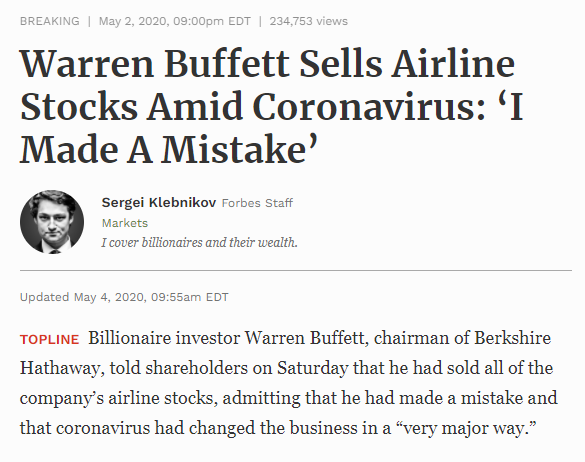Have you ever had to cut your losses on one of your investments?
If you had, I am guessing it probably didn't feel good. After all, the feeling of a loss is never a good feeling.
So what can you do to handle these inevitable losses that will come time to time?
Well, in this blog post - I reveal three actionable steps and mental shifts that you can take to cope better with investment losses.
1. Not all seeds will bear fruits

In investing, it is important to acknowledge that losses are inevitable. Just like how when a farmer sows his seeds, not 100% of the seeds actually bear fruits.
However, does the farmer get discouraged over that few "losing" seeds, or does he focus on the seeds that actually bear fruits?
Well, if you guessed that he would focus on his "winning" seeds, then you are right.
All of these comes down to building a portfolio.
It's not whether you're right or wrong that's important, but how much money you make when you're right and how much you lose when you're wrong.
Having a portfolio is an important lesson for every investor.
It allows you to make an investment mistake, and yet still make money overall - because one single investment does not decide your fate.
Just like a farmer, he doesn't make his bet his farm on one single seed. Instead, he buys a ton of seeds, and let nature do its job.
And if you are ever discouraged by your losses, remember that even the most quoted investor, Warren Buffett make mistakes at times:

An article from Forbes
However, does this mean that he is a bad investor?
Well, mainstream media loves to portray and magnify these mistakes - and fail to glorify his winnings in the major stakes that he is in.
(Who could blame them, after all, we are more likely to click on a negative news than a positive one.)
In any case, the bottom line is this - design an investment portfolio, and never let a single position decide the fate of your wealth.
2. Reflect on Mistakes

In most schools, we are brought up with the mindset that mistakes are bad, and we are punished for making mistakes - because of that, some people tread their lives so safe, so that they will never make a mistake.
For those who are fans of Harry Potter, you might have heard the author, J.K Rowling said this:
You might never fail on the scale I did, but some failure in life is inevitable.
It is impossible to live without failing at something, unless you live so cautiously that you might as well not have lived at all – in which case, you fail by default.
So if you are already investing and taking action towards your financial freedom, by default, you are already better than those who took the easy path of playing it safe, staying on the sidelines, and taking zero action towards their financial freedom.
So never be discouraged by the losses that you may have - all of these losses are opportunities to strengthen yourself as an investor, and it puts you far ahead of those who are taking no action at all. The most important part is to learn from the losses and grow as an investor.
So how do you learn from these mistakes, is by asking yourself some of these questions:
- What is it that I can learn from this mistake?
- What can I do in the future to reduce the possibility of this mistake in the future?
And don't just think about these mistakes in your head. Write your reflections down in a notebook and you will realise that writing things down will give you a greater clarity of your thought process.
And if you truly want to master learning, share your mistake and reflection with someone, and teach them how you might avoid or mitigate these mistakes in the future.
Writing gives you clarity, but teaching will give you mastery.
3. Create Processes

Once you find out the mistakes that you have made, you need to create a process that helps you to avoid making that same mistake in the future.
For example, in the past, I used to follow "gurus" blindly when I invest, with no clue of what I was actually doing. It turned out that I was investing in "poor quality" companies - such as having negative earnings, high debt, etc.
So what did I do then?
Well, to avoid investing in poor quality companies in the future, I created myself an 8-Point checklist to filter out all the poor quality companies. If they fail the checklist, then I won't invest in it at all.
That is example of a process to avoid repeating mistakes.
Another example for those who are doing trading.
It is not uncommon to see their stocks flying high and eventually taking a deep dive, turning profits into losses.
A process that can be taken is to do a "profit secure" through setting up stop-loss orders. So that even if the share price were to plunge (unless it is a gap), you know you will walk away with some profits at least. Of course, this is more for trading, rather than stock investing.
(For investing, typically, a share price plunge, is an opportunity to add more positions, provided the fundamentals remain intact.)
What's Next?

If you have a first-time reader of this blog, I like to introduce to a free resource page I created for investors who just started out. I call it the Stock Investing Hub, and you can get access to it for free right below.

The Stock Investing Hub
Never get lost in your investments again.
It also includes the 8-Point checklist that I mentioned earlier on avoiding poor quality companies, so make sure to check it out if you haven't.
Also, if this blog post benefited you, feel free to share with your friend and family who might benefit from this 🙂
